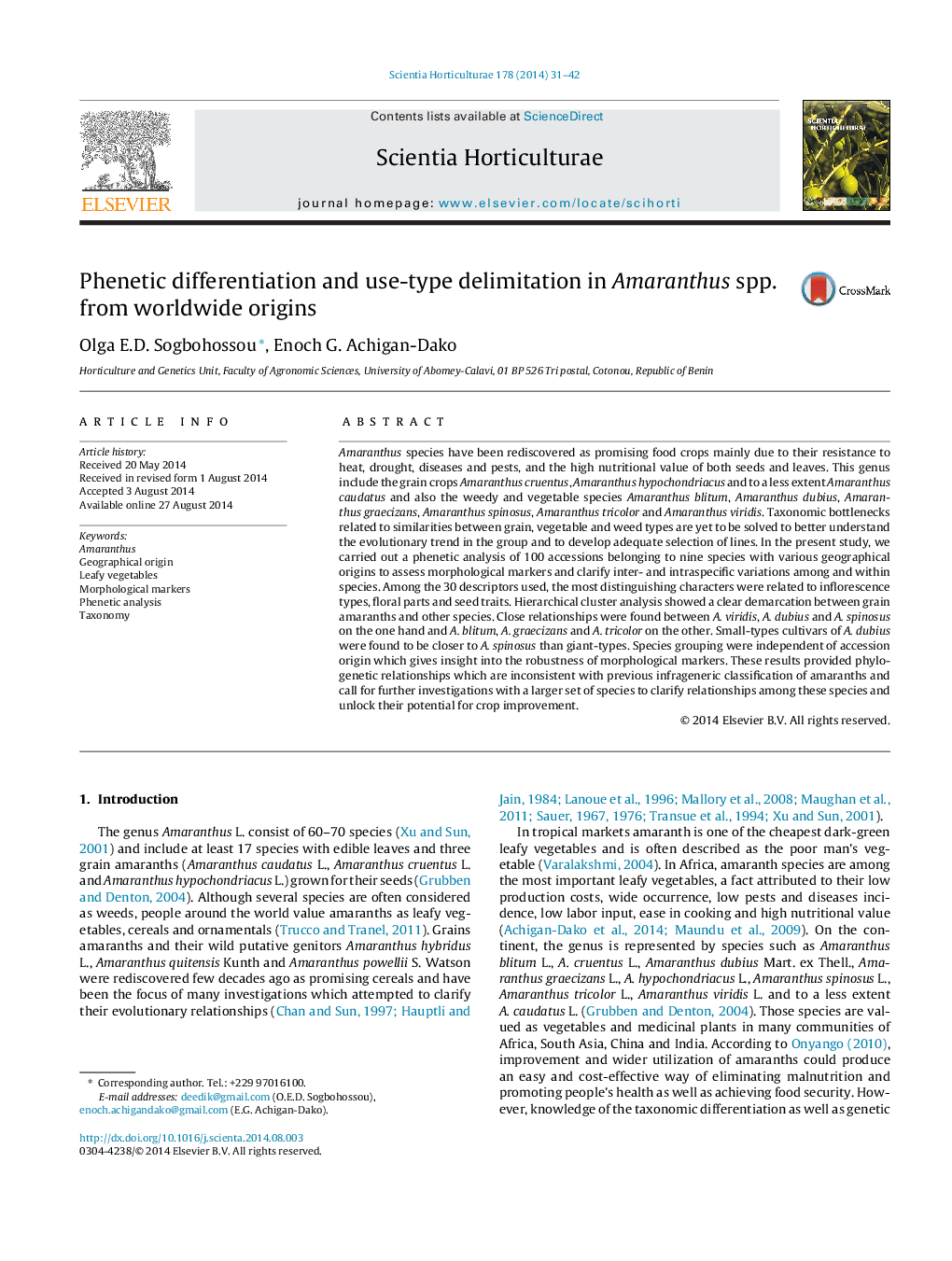| Article ID | Journal | Published Year | Pages | File Type |
|---|---|---|---|---|
| 4566559 | Scientia Horticulturae | 2014 | 12 Pages |
•The morphological variability of nine Amaranthus species was assessed.•A clear separation between grain amaranths and other species occurred.•Close relationships between some weedy amaranths were revealed.•Vegetable and grain production of accessions in local conditions analyzed.•Ways forward for sustainable conservation and use of amaranth germplasm.
Amaranthus species have been rediscovered as promising food crops mainly due to their resistance to heat, drought, diseases and pests, and the high nutritional value of both seeds and leaves. This genus include the grain crops Amaranthus cruentus, Amaranthus hypochondriacus and to a less extent Amaranthus caudatus and also the weedy and vegetable species Amaranthus blitum, Amaranthus dubius, Amaranthus graecizans, Amaranthus spinosus, Amaranthus tricolor and Amaranthus viridis. Taxonomic bottlenecks related to similarities between grain, vegetable and weed types are yet to be solved to better understand the evolutionary trend in the group and to develop adequate selection of lines. In the present study, we carried out a phenetic analysis of 100 accessions belonging to nine species with various geographical origins to assess morphological markers and clarify inter- and intraspecific variations among and within species. Among the 30 descriptors used, the most distinguishing characters were related to inflorescence types, floral parts and seed traits. Hierarchical cluster analysis showed a clear demarcation between grain amaranths and other species. Close relationships were found between A. viridis, A. dubius and A. spinosus on the one hand and A. blitum, A. graecizans and A. tricolor on the other. Small-types cultivars of A. dubius were found to be closer to A. spinosus than giant-types. Species grouping were independent of accession origin which gives insight into the robustness of morphological markers. These results provided phylogenetic relationships which are inconsistent with previous infrageneric classification of amaranths and call for further investigations with a larger set of species to clarify relationships among these species and unlock their potential for crop improvement.
